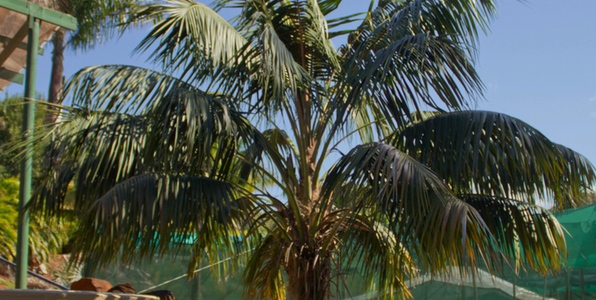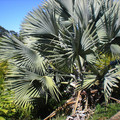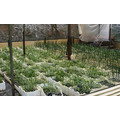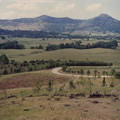Gallery
Click the thumbnails below to view image gallery:Palms are beautiful additions to any garden or indoor space if you're going for the beach or island vibe. Some palms are more difficult to maintain and care for than the others, but the Kentia Palm is one of the all-time favourites for homeowners and landscapers because of its low-maintenance yet strikingly tropical appearance.
The Kentia Palm has a thin, slender trunk with feather-shaped, drooping fronds. When young, the trunk is dark green and turns to brown as it gets older. The Kentia flowers yearly around November or December
Kentia's are very adaptable to a variety of soil conditions, which is one of the reasons why they are easy to maintain. They prefer sandy soils with good drainage so they are good palms to grow if you live in a coastal area. Kentia's can grow up to 18 metres in their natural habitat in Lord Howe Island and will slowly head towards this in your garden.
This palm is also a favourite for indoor décor. It is pretty tolerant of neglect and can handle low sunlight exposure, air conditioning and central heating.
If you are considering adding the Kentia to your personal greenery, here are some tips on how to care for it properly to help it grow optimally.
Indoors
Although a Kentia Palm can bear neglect well, it is still best to give it the best possible living conditions to make it grow faster and better. Remember that the Kentia is a somewhat slow growing palm. Place your pot in an area where it will receive decent but indirect amounts of sunlight especially in the early mornings and late afternoons. Direct sunlight, especially for young Kentia's could lead to sunburn.
Do not overwater the plant. When indoors, only water it when the uppermost soil layer is dry. Also ensure that the soil has decent drainage .You can mist your plant to simulate humidity and to prevent pesky spider mites from infesting your Kentia. Misting will also take care of dust build up.
Overwatering your Kentia will cause its roots to rot if the soil's drainage is not able to draw off the water fast enough. Under-watering on the other hand can cause yellow tips that can eventually turn brown. One sign to look for if the plant is not being watered enough is its stalks and leaves. If they are not standing upright as they should, you may want to do deep watering to help improve their condition.
To ensure that your Kentia is getting all the nutrients and minerals that it needs to grow, you can apply a slow release fertilizer once or twice a year, in the summer and spring.
Also avoid re-potting the plant as the Kentia is generally anti-social and hates being disturbed. The Kentia is again, a slow-growing palm with fragile roots so if you must re-pot, be very careful in handling its root ball.
Outdoors
As in indoor care, the Kentia needs a slightly moist soil. Watering should only be done when 1 or 2 inches of the top soil is already dry. Make sure that your soil's drainage is effective to avoid root rot. Misting would also be ideal to imitate humidity in its environment.
Kentia Palms do well in shady areas so no need to worry about looking for a spot with direct sunlight. If spotting on fronds occurs it is an indication of too much sunlight and it would be advisable to move the plant if it's in a pot.
Most of the diseases of this plant occur when it is either overwatered or not watered enough and if it's getting too much or too little sun.
You might be tempted to prune your Kentia very often but try to resist the urge. Over-pruning may cause permanent damage to the trunk and may make your palm susceptible to fungal infections.
Lastly, try to maintain a tropical climate for your Kentia all year round. In its native habitat of Lord Howe Is the climate is mild and therefore coastal areas are best if growing a Kentia outside.
<< Previous A Beginner's Guide to Fishtail Palm Tree Care (Caryota Genus) | Back to Tips for Growing Magnificent Foxtail Palms (Wodyetia bifurcata) | Next >> Keeping Your Foxtails Disease Free






